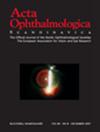Early detection of biochemical changes in tear fluid induced by contact lens wear using raman spectroscopy
Abstract
Aims/Purpose: The aim of this study is to evaluate different approaches to investigate early alterations in tear biomolecular profiles induced by contact lens (CL) wear. This includes assessing the impact of CL wear on tear volume, osmolarity, and biomolecular composition using Raman spectroscopy.
Methods: Two participants of the same sex (male), age (23 years), and with a similar lifestyle wore different CLs for two hours. Ocular analysis was performed at three time points: before CL insertion, immediately after CL removal, and two hours post-removal. The analyses included tear meniscus height and osmolarity measurements. Tear samples were collected at each time point and analyzed using Raman spectroscopy.
Results: Tear volume and osmolarity remained unchanged throughout the study. Raman spectroscopy highlighted notable changes in the biomolecular profile of tears after CL wear, particularly in the 2700-3200 cm-¹ spectral window.
Conclusions: Among the analyses performed, only Raman spectroscopy revealed significant changes. It highlighted alterations in the biomolecular profile of tears post-CL wear, particularly in the 2700-3200 cm-¹ spectral window associated with C-H stretching. The ability of Raman spectroscopy to detect these subtle, subclinical changes underscores its value as a non-invasive tool for analyzing individual responses to CLs. Notably, Raman spectroscopy captures molecular-level alterations, which form the basis of changes in the physical and functional properties of the tear film, including those measured by tear meniscus height and osmolarity. These changes become detectable by traditional techniques only in a late stage, while molecular-level alterations can be detected earlier, providing an opportunity for proactive intervention and management.

 求助内容:
求助内容: 应助结果提醒方式:
应助结果提醒方式:


